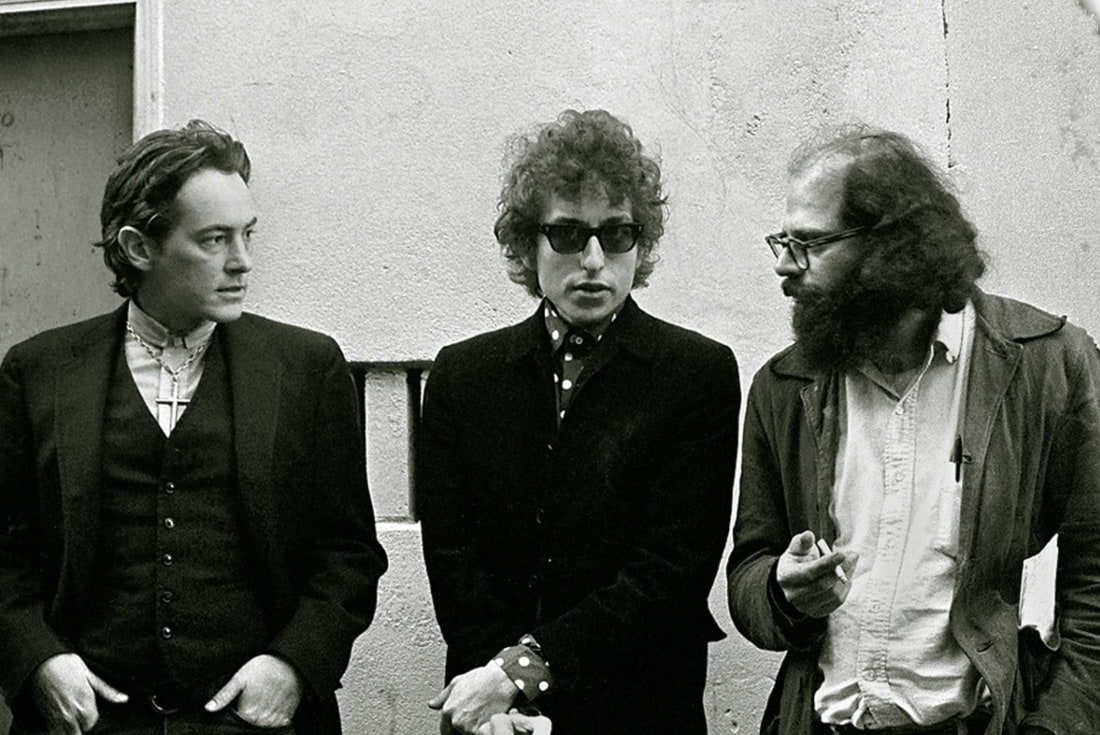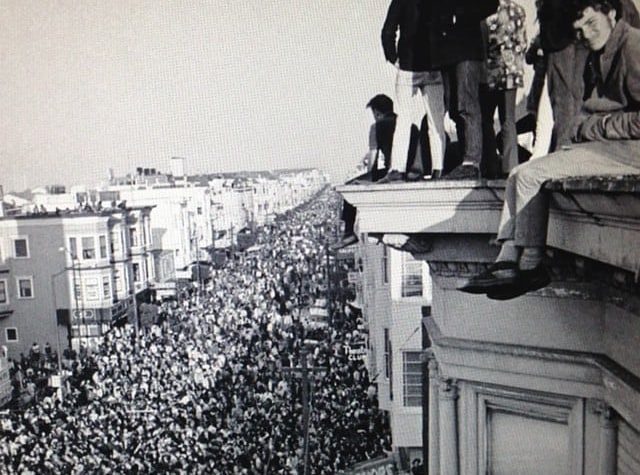The Beat Generation was a group of authors and their followers who rejected the growing banality of American life following World War II. Bouncing around loosely in a triangle between New York City (where Alan Ginsburg, Jack Kerouac and other beat attended Columbia roughly over the same time), the beats conducted their life as one long jazz solo. With it’s roots in more authentic black history and culture and serving as an antidote to Big Band and classical music whose literature explored and influenced American culture in the post-World War II era. The bulk of their work was published and popularized throughout the late 1950s. Central elements of Beat culture are rejection of standard narrative values, the spiritual quest, exploration of American and Eastern religions, rejection of materialism, explicit portrayals of the human condition, experimentation with psychedelic drugs, and sexual liberation and exploration. The members of the Beat Generation developed a reputation as new bohemian hedonists, who celebrated non-conformity and spontaneous creativity.
The Beats expressed their alienation from conventional, or “square,” society by adopting an almost uniform style of seedy dress and manners and “hip” vocabulary borrowed from jazz musicians. Generally apolitical and indifferent to social problems, they advocated personal release, purification, and illumination through the heightened sensory awareness that might be induced by drugs, jazz, sex, or the discipline of Zen Buddhism. The Beats found the joylessness and purposelessness of modern society sufficient justification for both withdrawal and protest.

Lorem ipsum dolor, 2018
caption goes here.
Beat poets sought to liberate poetry from academic preciosity and bring it “back to the streets.” They read their poetry, sometimes to the accompaniment of progressive jazz, in such Beat strongholds as Lawrence Ferlinghetti’s City Lights bookstore in San Francisco. Beat writers advocated a kind of free, unstructured composition in which the writer put down his thoughts and feelings without plan or revision-to convey the immediacy of experience.
Allen Ginsberg's Howl (1956), William S. Burroughs's Naked Lunch (1959) and Jack Kerouac's On the Road (1957) are among the best known examples of Beat literature. Both Howl and Naked Lunch were the focus of obscenity trials that ultimately helped to liberalize publishing in the United States.
In the 1960s, elements of the expanding Beat movement were incorporated into the hippie and larger counterculture movements. Neal Cassady, a primary character in Kerouac’s On The Road, emerged later as the driver for Ken Kesey's Merry Prankster bus. Allen Ginsberg's work also became an integral element of early 1960s hippie culture and Ginsberg was a headliner at one of the seminal hippie events, the January 1967 Human Be-In.
The biggest figure of the Beat Generation, Jack Kerouac
By 1958, tourists to San Francisco could take bus tours to view the North Beach Beat scene, prophetically anticipating similar tours of the Haight-Ashbury district ten years later. By about 1960, the notoriety of the movement had begun to fade and by 1965, North Beach had become a tourist trap filled with topless nightclubs and the Beat Generation had largely dispersed leaving a cultural vacuum which was about to be filled.
While the hippies inherited a tradition of cultural dissent from bohemians and beatniks of the Beat Generation in the late 1950s there was also a bit of friction, initially between the two groups. The Beats derisively called the younger generation coming up “Hippies,” which stood for “junior-grade hipsters,” or wannabes. “The Beats looked down on the hippies as imitation bohemians who were only interested in getting stoned and having a good time rather than doing something serious like writing poetry or playing jazz.” - Charles Perry, Haight Ashbury
New text
New text again

